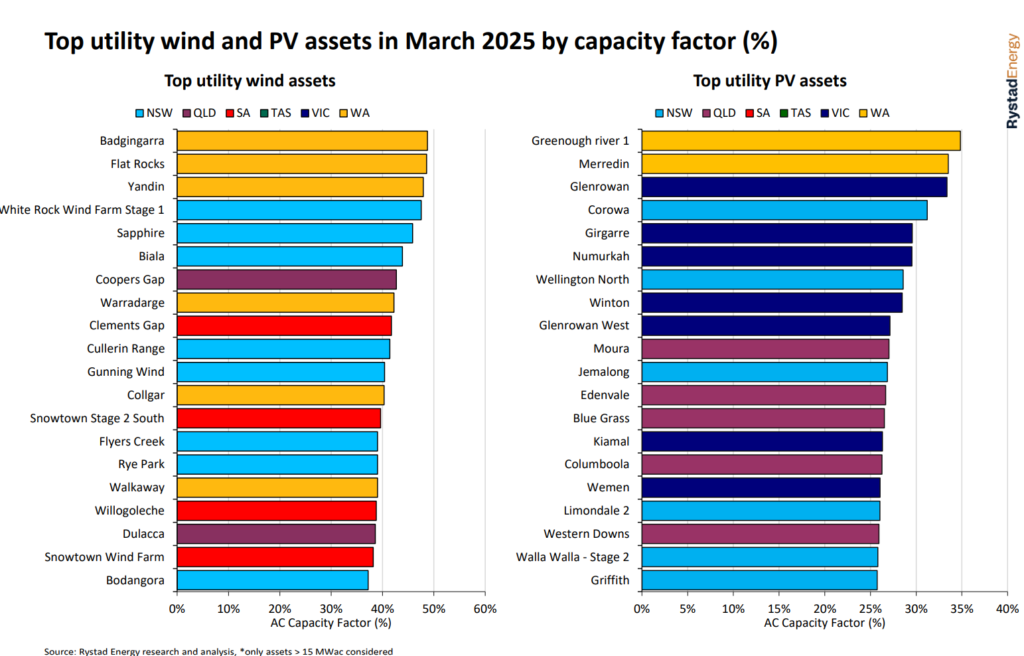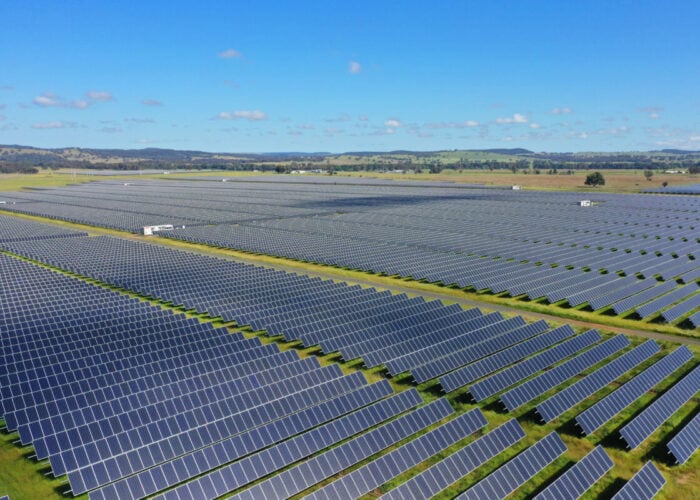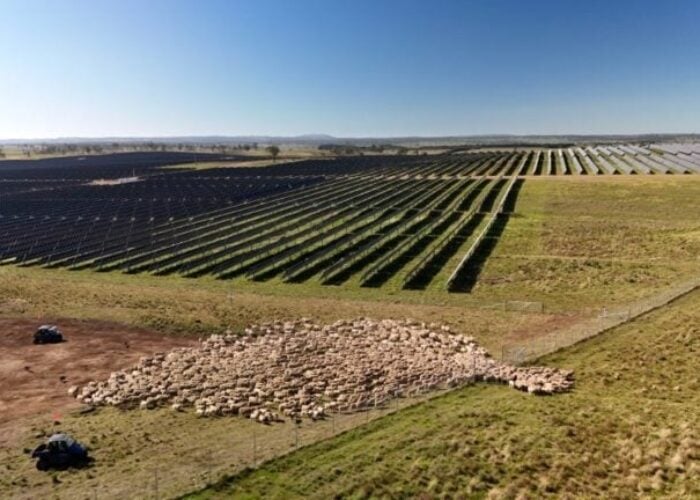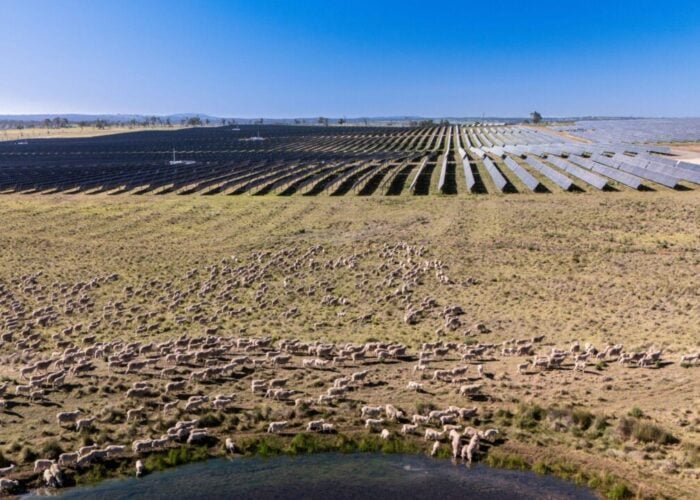
According to research from Rystad Energy, the 40MW Greenough River solar PV plant in Western Australia was the country’s best-performing utility-scale solar asset in terms of AC capacity factor for the second month running.
The PV plant topped the rankings for best-performing utility-scale PV plants in Australia in February and March, whilst it ranked seventh in January, with a slow start to the year.
Unlock unlimited access for 12 whole months of distinctive global analysis
Photovoltaics International is now included.
- Regular insight and analysis of the industry’s biggest developments
- In-depth interviews with the industry’s leading figures
- Unlimited digital access to the PV Tech Power journal catalogue
- Unlimited digital access to the Photovoltaics International journal catalogue
- Access to more than 1,000 technical papers
- Discounts on Solar Media’s portfolio of events, in-person and virtual
Or continue reading this article for free
Bright Energy Investments—a joint venture between DIF Capital Partners, superannuation fund Cbus, and state-owned Synergy—owns the Greenough River plant, which has been operational since April 2018. The plant features 450,000 solar PV modules across these two phases. First Solar, a US thin-film module producer, provided the solar PV modules.
Rystad’s research found that the top three PV plants maintained their rankings in February and March. For the third month running, Sun Energy’s 100MW Merredin plant was the second top utility-scale solar PV asset, followed by Victoria’s 130MW Glenrowan plant, owned by CIMIC Group.
The 39MW Corowa and 93MW Girgarre solar PV plants in New South Wales and Victoria, respectively, came in fourth and fifth.

Energy generated from utility-scale wind and solar PV assets grew by 12% month-on-month to 4,601GWh. With the end of March seeing the curtains close on the first quarter of 2025, New South Wales secured the top spot amongst Australia’s states for solar PV generation with 2.45TWh.
In the National Electricity Market (NEM) and the Wholesale Electricity Market (WEM), renewable energy generation, including hydro and biomass, reached 43% in both in the first quarter of 2025, signalling a strong start to the year in terms of the energy transition.
Casting an eye to the future, UK-based research group Cornwall Insight said last year that the NEM will likely add 150GW of solar PV, wind, and energy storage capacity by 2043. A report outlined that the installed capacity for these technologies is expected to rise from 52GW in 2025 to 208GW by 2043, representing a 300% increase.
Australia’s National Renewable Energy Priority List
March 2025 was a significant month for Australia’s renewable energy prospects, not just because Anthony Albanese, the Prime Minister, revealed the date for the upcoming federal election, which will take place on 3 May, but also because the National Renewable Energy Priority List was formed.
As reported by PV Tech last month, the inaugural Priority List identifies 56 priority projects nationally, including 24 transmission and 32 energy generation and storage projects.
Seven of these 32 energy generation and storage projects feature solar PV, amounting to 4,130MW of capacity. Many of these projects feature a co-located battery energy storage system (BESS) to optimise the power plant, a trend that has risen worldwide in recent years.
Noteworthy projects to have been added to the Priority List include the 1,000MW Australian Renewable Energy Hub, a wind and solar hybrid project being pursued in Western Australia, and the Darwin Battery Energy Storage System, which will feed into SunCable’s Australia-Asia PowerLink (AAPowerLink) interconnector project.







